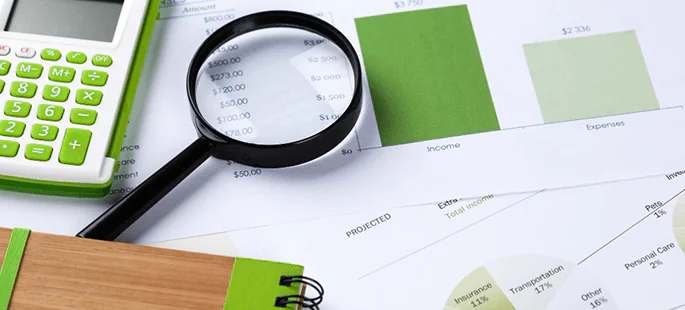TradeNovo


Making the right investment decisions is crucial for meeting your goal. But, if you’re new to the world of finance, choosing which steps to take can be overwhelming. Luckily, the professionals at TradeNovo are here to guide you through the complex finance landscape.
Education is key to making good investment decisions. TradeNovo specializes in connecting beginners with firms and tutors providing investment education. Best of all, there are no fees to get started. It’s never been easier to start your journey towards financial literacy and begin investing with expert knowledge.
TradeNovo lets users sign up for free so they can focus on what really matters, understanding the key principles of investing. Our professionals value the importance of fully understanding the fundamental concepts and how they play an important role in the decisions you make. Through our free services, you can start your journey investing with the same insight the experts use.


Who said you had to be an expert to make wise investment decisions? TradeNovo is your go-to source for connecting with experienced tutors ready to help beginners understand the basic concepts of investing. All you have to do is sign up to TradeNovo and start your journey towards financial education.
TradeNovo has services catered to all levels of investment education. Whether you’re a newbie looking to delve into the world of investing or a seasoned investor looking to brush up their knowledge, TradeNovo has options for you. Sign up today to discover more.
There are also educators available for experienced investors interested in continuing their education as well. TradeNovo is proud to help keep you on the path towards growing your foundation. You’re never too far on your journey to improve your skills and prepare for what’s ahead.
At TradeNovo, we aim to keep people informed about why knowledge is key for making good financial decisions. We are a free path that you can take toward training and education. TradeNovo never charges people to connect with educational resources.
Our professionals realize the value of proper education when it comes to the dynamics of investing. When you sign up to TradeNovo, you can use our free services to connect today. We’re designed to help you get ahead without complications.


Users don’t have to look far to find investment resources. While there are many available, they are often costly and place focus on opportunities over education. TradeNovo recognizes how proper financial education is key for moving on in the world of investing.
We’re not looking to make a quick buck at TradeNovo. Instead, our mission is to help people fully understand the concepts involved in investing. By connecting people with professional training, they will begin their journey to recognize a good investment opportunity.
At TradeNovo, our team is proud to provide services to everyone with an interest in investing and trading. Your background and current education status won’t leave you excluded from what we offer. The diverse professionals at TradeNovo are thrilled to help you get connected to essential resources to navigate your learning experience. Sign up today to discover more about how we will help you get ahead.

Investing isn’t black or white. There are many different strategies, holdings, and liabilities that must be considered. Your ability to make an objective financial decision depends on how well you know these factors. They can make or break how you assess the risk factors of investing.
Making a practical goal is crucial for every investor. Other areas you will need to understand before setting a goal include market swings, risk threshold, portfolio diversification, and cash flow, just to name a few. TradeNovo can connect you with the right tutor so all of this makes sense to you.
How well you understand the market plays a huge role in making investments that pay off. TradeNovo wants to make sure you get connected with a firm that can help you have a clear understanding of how to adjust your strategies based on market patterns. Sign up today to learn more.

People have been trading since the brink of time. Back in the day, people would barter items and services. Today, trading is part of a complex financial market. TradeNovo is here to connect you with an expert tutor who can help you understand how the modern market operates. You don’t want to enter without knowing the highs and lows of trading.
The financial market is rapidly evolving. Knowledge is key to adjusting your choices based on the market and economy. When you’re ready to be guided through the ups and downs of trading platforms, TradeNovo is the place to start.
Investors are drawn to the opportunities presented by the stock market. This is a place where you can buy shares in companies. However, supply and demand are based on economic conditions. Prices can change at any moment and there are many factors that contribute to that. TradeNovo is here to connect you with a tutor who will educate you on the risks and fluctuations of the stock market.
If the stock market is too risky for you, the bond market presents another option. This is where you can get an IOU from the company and repay it when the principal matures. TradeNovo is your trusted source for connecting with an educator who will thoroughly explain the credit risks and interest rates involved with bonds. They will set you on the right track toward navigating the bond market.
Did you know that you can get involved in trades for essential materials and agricultural products? Everything from oil to wheat, and even gold, is available on the market. Commodity trading has similarities and differences from the stock market. When you’re ready to learn more, TradeNovo’s experts are here to connect you with the right trading education firms. They will explore all trading markets with you to find out where you want to invest.
If you’re interested in trading, then you’re likely curious about the Foreign Exchange Market. FOREX is the world’s largest free trading market. However, navigating this market is complex because you need to understand the trends, developments, currency movements, and influence of macroeconomic signals. Sounds like a lot, doesn’t it? There is no need to feel overwhelmed about trading. TradeNovo is your first step towards learning more about this trading market.
The idea of investing is to allocate money (or capital) with the intention of gaining more. Understanding how this works is a vital part of your personal (or corporate) financial experience. The more you know, the better prepared you will be for making trading and investment decisions. Start free today through TradeNovo to find the best educational resources only a click away.
Using TradeNovo to connect with experts at financial firms for education can change the entire dynamics of how you approach investing. When you understand the market dynamics, risk management, and effective strategies, it can make a huge difference in your experience. We are ready to get you set up with a tutor who values your visions and understands your needs.

Every investor needs a structured plan when it comes to their investment decision-making process. Having a strategy at play can help you guide through the market conditions, assess risk tolerance, and get one step closer to your goals.
Using TradeNovo, people can connect with tutors who are the right fit for their investment style. They are ready to help you construct an investment plan that aligns with your overall goals. Most importantly, they will give you a better understanding of these strategies and why they are effective.
These experts can help you define an investment strategy that puts discipline over emotional decision-making. You will be ready to face the market with the right mindset. Their goal is to help you accomplish yours.

Yes, investing can be a very financially rewarding experience. But, there are many risks involved that every investor needs to be prepared for. When you understand the risks of investing, you will be ready to manage your decisions to be prepared for them. TradeNovo is your door to finding a tutor who will help you navigate these risks with your best interests in mind.
This refers to how economic factors contribute to the risks of investing. Interest rates, recessions, and other events can play a role in fluctuating prices.
This refers to the risk involved when investors are receiving payments through an issuer. For any reason, the issuer could default on their payments, which can cause a gap in finances.
The prices of real estate and private equity are continuously changing. Understanding how this works is essential for navigating the market successfully.
Inflation plays a vital role in the expected return on investment. Price fluctuation can change the value of money over time, leading to possible investment risks.
Creating a diverse portfolio can decrease the risk of an imbalance. Use TradeNovo to connect with an educator who can help you understand the concept of portfolio diversification.
This risk involves having to reinvest your funds/capital at a lower rate than your original investment. No investor wants to experience this, but it’s something everyone should be prepared for. Learn how to manage this risk effectively by signing up with TradeNovo.
A lack of experience shouldn’t stop you from pursuing the world of investing. Think of TradeNovo as a bridge, leading you on the way to financial education. You can avoid the stress of figuring out where to start, and let us connect you with tutors who have your experience and goals in mind. Your investing education experience starts today!

| 🤖 Cost of Registration | No cost involved for joining |
| 💰 Charges | Services provided without fees |
| 📋 Registration Details | Easy and fast to get started |
| 📊 Focus of Learning | Knowledge on Cryptocurrencies, Foreign Exchange, and Diverse Investments |
| 🌎 Service Availability | Offered in the majority of countries, USA excluded |


